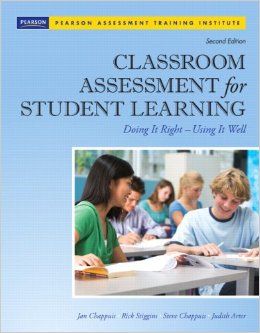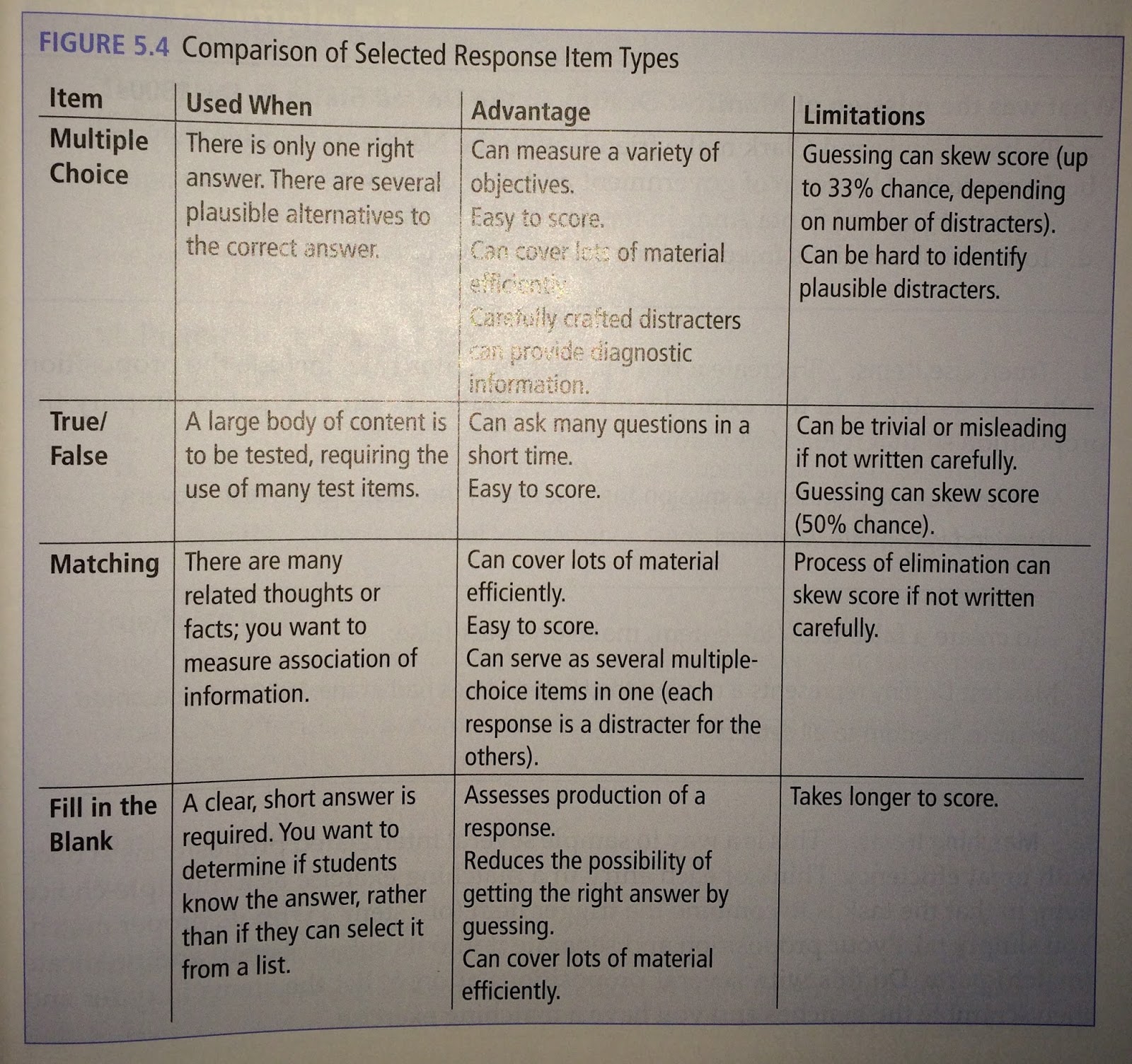Classroom Assessment Chapter 5

To help us work towards our school goal of improving our understanding and practice of assessment, my principal has provided our staff with a copy of Classroom Assessment for Student Learning: Doing it Right – Using it Well, by Jan Chappuis, Rick Stiggins, Steve Chappuis, and Judith Arter. As I make my way through the book, I will be summarizing my learning as a means of organizing my thoughts and getting clarification on particular ideas.
 |
| Classroom Assessment for Student Learning Cover. (Accessed 2016). Uploaded to Amazon; Pearson Education. Available online at: https://www.amazon.ca/Classroom-Assessment-Student-Learning-Doing/dp/0132685884 |
Chapter 5 – Selected Response Assessment
* see Chapter 4 for the most appropriate times to use selected response assessments
* before you begin, use the assessment development cycle and make a blueprint (Ch. 4)
Assessment Development Cycle Cont.
5 ) Develop or Select Items, Exercises, Tasks, & Scoring Procedures
a ) Identify content to include
– use your professional judgement
b ) writing propositions
– facts/concepts students will be held accountable for learning
*seems to be the learning targets rewritten in student language
c ) choosing item types
 |
| Chappius, et al. (2012). Figure 5.4 Comparison of Selected Response Item Types. Classroom Assessment for Student Learning, pg 133. |
d ) writing items
– take propositions from step “b” and change slightly based on item type to create questions
– multiple choice: keep first part of proposition as a question and use the other part as the correct answer,
fill with plausible answers
– matching: separate into parts like for multiple choice but use multiple propositions
– true/false: rewrite proposition but make 1 part false
– fill-in-the-blank: leave out the part of the proposition that defines the concept
e ) general guidelines
– aim for the lowest possible reading level
– ask a full question in the stem
– eliminate grammatical cues (asking for plural, using “an”, etc)
6 ) Review and Critique the Overall Assessment for Quality Before Use
a) determine testing time
– can it be completed and reviewed in the time given
b ) review for quality
– does it match the blueprint
– can proper propositions be created from the questions
* there is a great Quality Checklist on page 146
7 ) Conduct and Score the Assessment
8 ) Revise as Needed
How to Use Selected Response as Formative Assessment
* follows 7 strategies of formative assessment from Chapter 2
1 ) Provide students with a clear & understandable vision of the learning target
– student friendly language
– have students write propositions
2 ) Use examples of strong and weak work
– students identify wrong multiple choice answers and explain why
3 ) Offer regular descriptive feedback
– use distractors to intentionally frame corrective feedback
4 ) Teacher students to self-assess and set goals
– students can use the blueprint to gauge their understanding
5 ) Design lessons to focus on one target at a time
– students can use propositions to generate items
6 ) Teach student focused revision
– students answer, “how can I make this better”
7 ) Engage students in self-reflection and let them keep track and share their learning
* there are good “reviewing results” tables to use with students on pages 152 & 154
_____________________________________________
I WANT TO KNOW:
How often do you use selected response questions in your assessment tasks?
Please leave your thoughts below 🙂